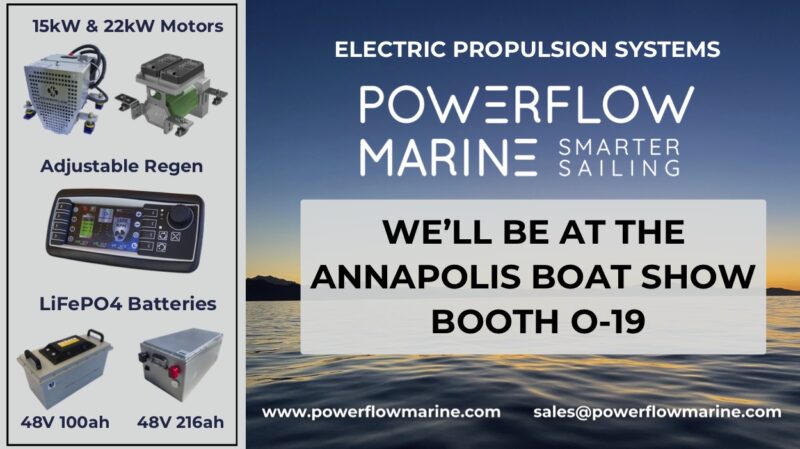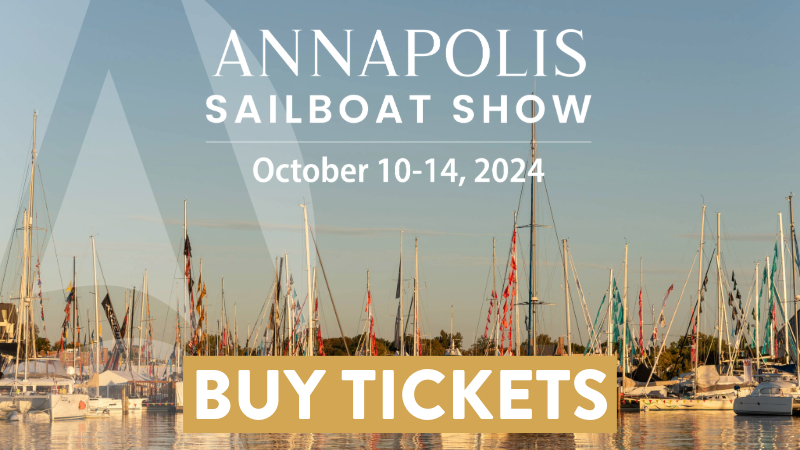
We Loved Meeting You at the Latitude 38 Baja Ha-Ha Fall Crew Party
It’s always way more work, coordination, sweat, stress and tears than we think it’s going to be, but we love hosting the Latitude 38 Baja Ha-Ha Fall Crew Party, held on Wednesday at one of our favorite venues: Spaulding Marine Center in Sausalito.
The work came together, the volunteers volunteered and instantly transformed the venue from workshop to lecture hall and hangout, and the people showed up. Thanks to everyone for bearing with us as we had a few technical difficulties with the ticketing system. It was serendipity, actually — it gave us a chance to ask everyone’s name rather than just scan and greet. Thanks to Lili Jeske and everyone at Spaulding.
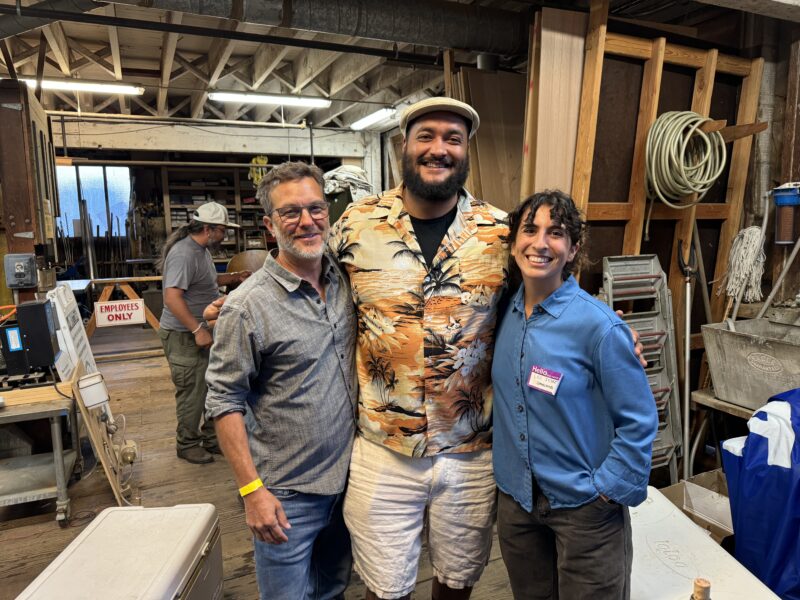
Thanks to Latitude 38 delivery driver Chris Siefert for volunteering. Thanks to Paul Irving, who is putting on this year’s Zongo Cup, a mellow race from Morro Bay to Avila Beach.
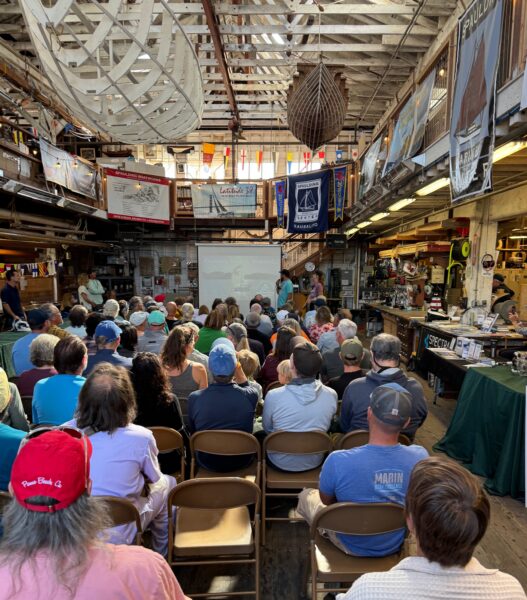
Here are just a few of the people we got to meet:
As we sat on a trailer in the Spaulding yard eating our Casablanca Mediterranean, we met the crew of the Passport 40 Perla, who are doing their first-ever Ha-Ha this year. “I’m excited. I’m terrified. I can’t wait,” said Brenton Piercy, the new and recent owner of Perla. Between bites of falafel, Brenton told us that he grew up sailing in Arkansas, came to the Bay and started racing, and eventually took the leap to bluewater sailing and boat ownership. (We also met Brenton’s crew Colm, a wry, hilarious Irishman.)
This is the kind of story we at Latitude love to hear — it’s the new sailors and boatowners who remind us how precious the dream is of sailing over the horizon.
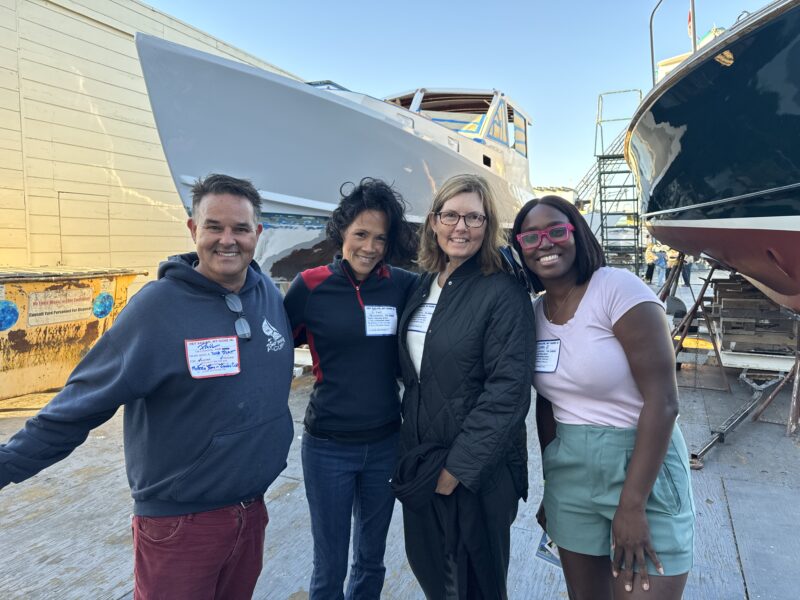
We got to meet Maddie Zug and Jeremy Snyder of the Tayana 42 Tardigrade, a lovely young couple who, if memory serves (apologies; we were drinking and socializing and not being reporters), decided to do this year’s Ha-Ha on Other People’s Boats before venturing out on their own in the future. We wish them luck in future Ha-Ha and cruising endeavors!
Some of our staff finally got to meet Curtis Havel in the flesh. He’s the former Richardson Bay Regional Agency harbormaster and current harbormaster at Clipper Yacht Harbor. Curtis told us about his recent travels to Japan and Fiji, where he surfed the legendary Cloudbreak.
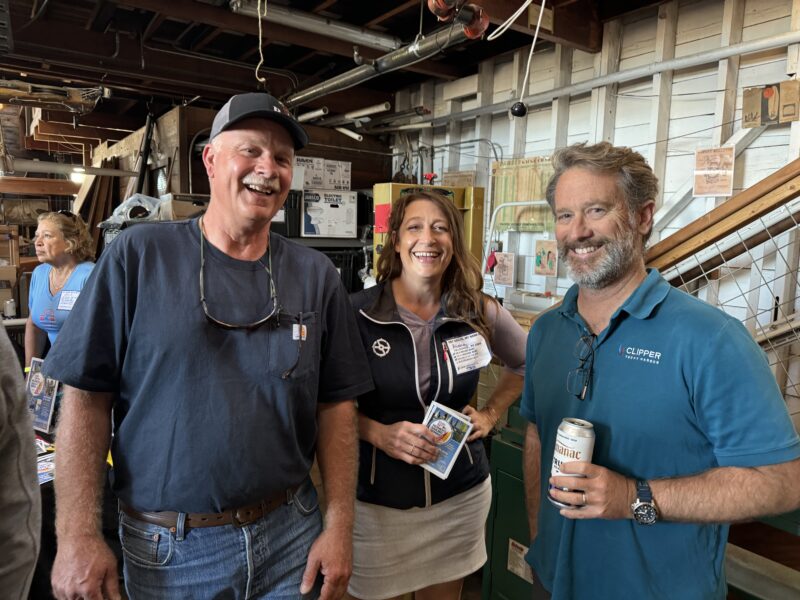
Some of our staff finally got to meet Yosh Han, who has kind of been blowing it up in Latitude this year. Yosh wrote an excellent piece, “The Art of Crew Life,” in the April issue, was on the cover of the August issue, and makes regular cameos on our social media.
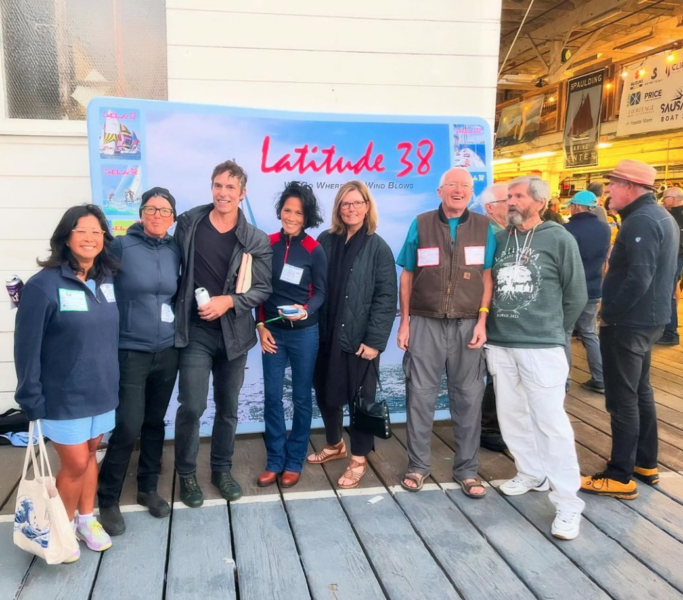
Some of our staff finally met Brady and Blue (and their dog Sharky), who took the spotlight early in the evening to present the Mexico Cruising Seminar.
After seeing the sailing duo on YouTube for years via SV Delos, then on social media sailing upon the blueness of Lake Tahoe, it was really good to see them IRL. (In Real Life.) If you missed the seminar ,or attended and wanted to grab the pdf version you can do so here for a limited time.
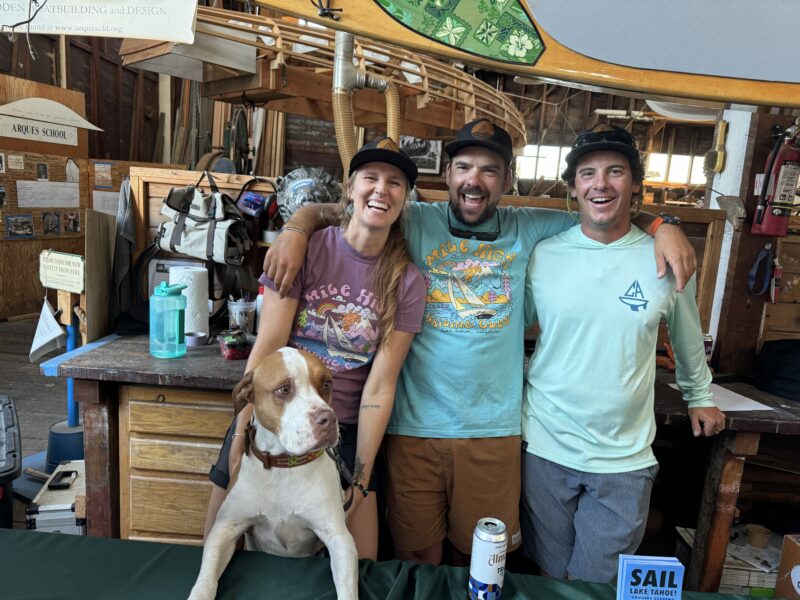
We got to meet Doug Samp and Lauren Cefali from the United States Coast Guard. “Thank you for allowing Lauren and me to attend the Crew List seminar and party at Spaulding and represent the USCG,” Doug wrote us yesterday. “The event was very beneficial for us to meet and engage with offshore sailors and discuss safety equipment and procedures. We had approximately 30 sailors engage us at the booth, and we validated the information on file within the NOAA’s SARSAT Beacon registration database for seven beacon owners.”
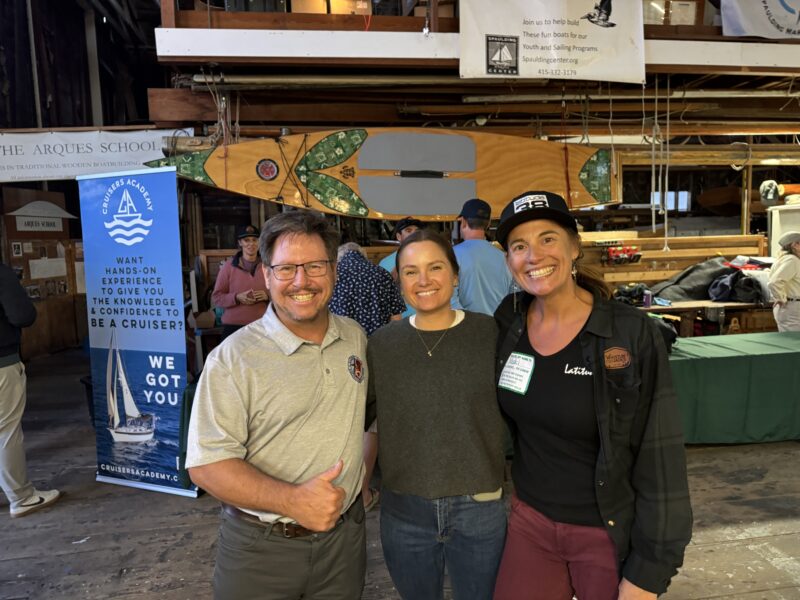
We got to see all the folks from Island Yacht Club, the staff of whom helped us clean up after the party. (Thanks, everyone!) We got to see some of the folks from the Science Sailing Center. In short, we got to see all our favorite people, to finally see people in the flesh, and to meet some new folks.
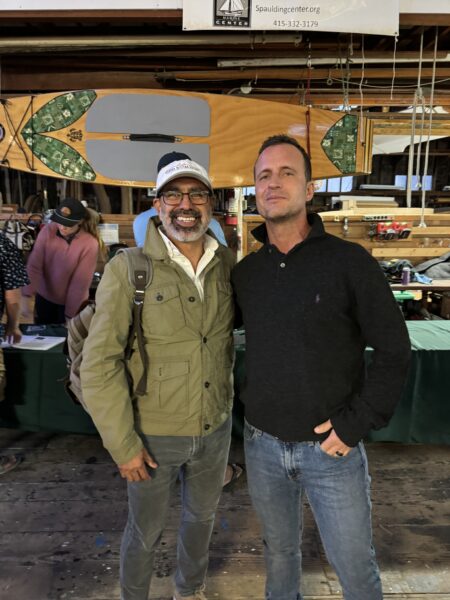
Thank you, Latitude Nation. Thanks for coming, thanks for reading, thanks for supporting us, thanks for helping us keep it all going.
We do it for you, and we couldn’t do it without you.
USCG Icebreaker ‘Polar Sea’, and Comments Sought on Wave Height Information
News of the USCGC Polar Sea might be a nice conversation icebreaker at your next cocktail party, and you may need to be ready to convert meters to feet when you’re farther than 60 miles offshore.
Offshore Waves MIght Appear Smaller
Is the US finally going metric? Sailor Jim Haussener sent us information on a request from the National Weather Service for comments from bluewater sailors about a proposal to change wave height analyses and forecasts from “feet” to “meters” for the High Seas text forecasts and the marine graphics (radiofax and internet). Interestingly the proposed change will only affect wave heights at 60 nm (111 kilometers) offshore or greater. Wave heights closer than 60 nm offshore will continue to be reported in feet. Note that this proposed change is only for the high seas and not coastal waters (within 60 nautical miles of the coast) or the Offshore Zone Waters. We assume this means when you go from 55 nm offshore to 65 nm offshore, incoming data would show waves that were eight feet are now 2.5 meters.
You can read more about the proposal in this Public Information Statement. You can add your comments here.
In the ’60s and ’70s the US tried to join the rest of the world in standardizing with the metric system for measurement. Kids were taught in school that 100 kph equaled 60 mph and that someday we’d all be operating in metric measurements. The effort to change finally ended in 1982 when President Reagan stopped the funding for the Metric Board. Hardware stores have rejoiced ever after since they sell both imperial and metric socket sets, doubling sales over hardware stores in the rest of the world.
Today, only three countries (the United States, Myanmar, and Liberia) retain the imperial system using feet, which came into existence loosely based on the length of the average person’s foot. Russell Coutts has explained that SailGP reports speeds in kph since, besides the US, it’s something everyone else in the world understands.
Comments will be received through Wednesday, October 16.
USCGC Polar Sea Arrives on the Bay
Sailor Steve Smith who sails his Olson 25 Synchronicity, sent in a couple of photos he took from Richmond as the USCGC Polar Sea headed for the Richmond-San Rafael Bridge. He took the shots yesterday morning as the Polar Sea was coming out of the San Francisco fog and under the bridge. He commented, “This heavy icebreaker has been non-functional since engine failure in 2010. Now she is being towed from Seattle to Mare Island for maintenance, then apparently will be sent to Suisun Bay. Who knew we needed an icebreaker in the Delta?”
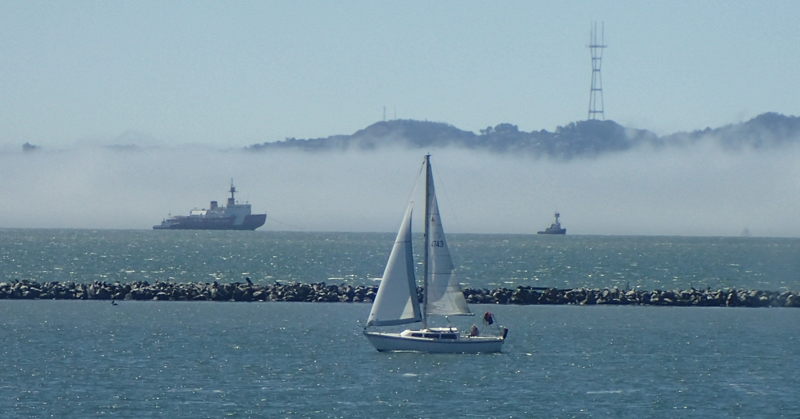
According to Wikipedia the Polar Sea was launched in 1977 and was built to cruise through six feet (that would be 182.88 cm, or 1.8288 meters) of new hard ice at 3 knots and break ice up to 21 feet thick when the vessel backs up and then rams it. Back in 1981 it was actually able to exceed this by breaking up ice 40 feet thick.
In the middle of winter, February 11, 1981, Polar Sea reached Point Barrow, Alaska, and on August 22, 1994, it became one of the first two North American surface ships to reach the North Pole. Randall Reeves and Harmon Shragge (in our current Sightings secton) might appreciate its leading the way as they’re battling ice through the Northwest Passage this summer.
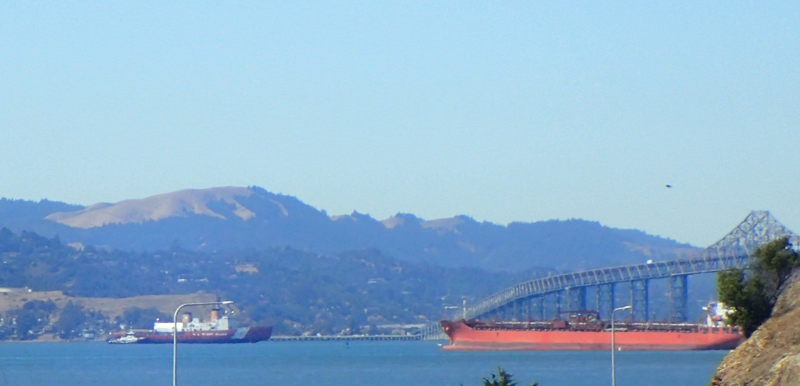
Since the icebreaker arrived in the middle of our local heat wave, we’re wondering if icebreakers are built with air conditioning, which, since the ship arrived under tow, may not be working anyway. We haven’t been able to find more information, but we are assuming the ship is joining what’s left of the mothball fleet in Suisun Bay.
After we posted this story we received the following information from the USCG Public Affairs Office:
Coast Guard Cutter Polar Sea arrived at Mare Island Dry Dock on September 5, 2024. Following a brief dry dock for cleaning and inspection, the ship will be moved to the United States Naval Reserve Fleet in Suisun Bay, CA to facilitate ongoing Coast Guard shore infrastructure investments at its previous berthing at Coast Guard Base Seattle. That major project includes pier construction and dredging to support Polar Security Cutters and other major cutters. CGC Polar Sea will still be accessible to the Coast Guard in supporting the continued operation of CGC Polar Star.
Thank you!
Very respectfully,
PACS Matt Masaschi
U.S. Coast Guard
Deputy Public Affairs Officer
Pacific Area Public Affairs
Stop Spending Your Days Off in the Engine Room and Start Sailing More
Our electric propulsion systems are designed by boaters with reliability and retrofitting in mind. We have a variety of marine grade LiFePO4 batteries, motor sizes, and the best prop for maximum regen. capabilities. Our unique custom display has an adjustable regen. function and provides the sailor with loads of performance data.
We have an install team in the SF Bay Area. Reach out for a FREE boat report and video consult via our website! www.powerflowmarine.com.
Cruising Kids Create Strong Bonds During the Baja Ha-Ha
What is the most important factor for parents and kids on “kid boats” in having a good time while cruising? The Baja Ha-Ha’s Grand Poobah observes their connections.
By a wide margin the most important factor is the proximity of one or more other “kid boats.”
On land, the rule is “happy wife, happy life.” On kid boats, it’s “happy kids, happy cruising.” Nothing makes kids happier than having other kids around to socialize with. There are often group sleepovers when kid boats gather. In many cases this gives some lucky parents a night off to rest. Or maybe even try to remember what it was they did together to produce kids in the first place.
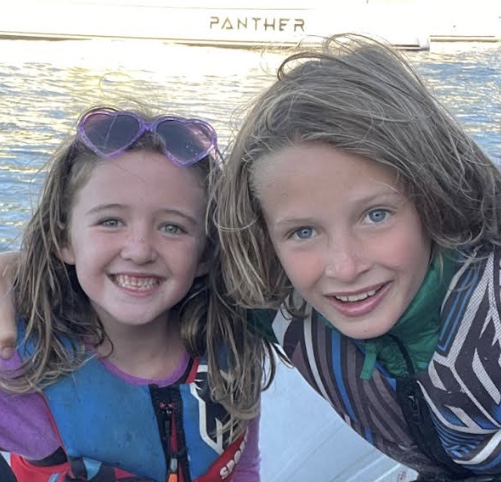
Anyway, the Poobah is happy to report that there are nine boats signed up for the Ha-Ha that, among them, will have a total of 20 kids between the ages of 1 and 18. The Poobah believes this is a record.
Normally the Poobah considers the “kid range” to be 1 to 16, but Teresa Oster wanted her 17-year-old daughter Lila and 18-year-old son Justin to be included as “kids.”
“They are almost adults,” she argues, “but will forever be our kids.”
Even though we’re way down here in Mexico, we can hear poor Lila and Justin groaning, “Mom!!!”
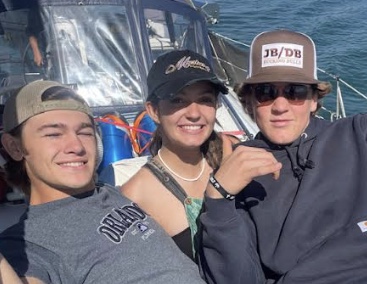
The breakdown of kids is as follows: Five of the kids are 5 or under; six are between 6 and 9; six are between 10 and 13; and three are between 14 and 18.
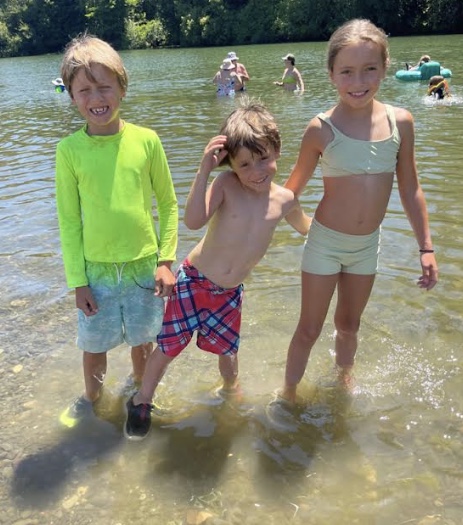
What are some of the Ha-Ha highlights for kids?
– Face painting, costumes, and prizes at the Last Cheeseburger In Paradise Kick-Off Party.
– Seeing all the sea life on the first leg.
– The Kruisers versus Kids Bazeball Game in Turtle Bay, where women and kids are always “safe,” and it’s common for 4-year-old girls to hit home runs.
– Frolicking on the beach and in the water with other kids at the Turtle Bay Beach Party.
– The Poobah’s “Kid World Championship Diving Contest” off the transom of Profligate at Bahia Santa Maria.
– And last, but maybe not least, watching in wonderment if not horror as old people engage in the “Here to Eternity Kissing Contest” in the warm surf of Cabo San Lucas.
By the end of the Ha-Ha, and following the events mentioned above, strong kid-boat bonds will have been made, which will typically last through much of Mexico if not all the way to French Polynesia and beyond.
In early October the contact information of “kid boats” will be shared with other “kid boats,” unless somebody wants to opt out.
Having no grandchildren of his own, the Poobah is looking forward to sailing south with all you kids!
Do You Know Where Your Hull Identification Number Is?
We just got a letter from Peter Veasey, who recently had a startling realization about his Hull Identification Number, or HIN. Has anyone out there had this problem? Please drop us a comment.
A month ago, I received notice that my boat of 47 years’ HIN was not valid.
I bought my Catalina in 1980 and I’m the second owner. At first, I didn’t worry about it because all I had to do is look on the starboard quarter and write it down. To my surprise, there was no HIN anywhere on the boat.
After several calls and emails, I have discovered some interesting information. First: Before 1980, Catalina and several other boat manufacturers didn’t embed a HIN. Second: Since there weren’t numbers, boat brokers often made them up. I looked around my marina at old Catalinas and discovered that either there wasn’t a number, or it was written by hand on the starboard quarter. The [manager] of my marina said he’s had several owners talk to him.
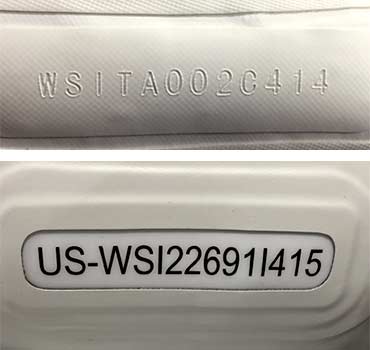
There is information about the boat in the HIN when you look at the format, year made, hull number, month built and who built the boat. My number was obviously made up since the first three letters said it was made at home and the hull number didn’t match the sail number.
I talked to Catalina in Florida who was helpful in getting a proper number. A California Catalina dealer suggested that since there is no number on the hull, I am somewhat free to make one up. I came up with a number that the USCG, I hope, will accept.
Someone on Facebook wrote about their experience going to the DMV: “I did talk to a gentleman who was helpful and said the Coast Guard audited DMV — they found that on a lot of the registration slips, the number exceeded 12 digits. On one example, it said USCG and then had 12 digits. They were not supposed to put the letters in the registration numbers.
Have you had this, or a similar experience?
Annual Women’s Sailing Seminar Gears Up for 32nd Event
This month’s sailing calendar includes the 32nd Women’s Sailing Seminar in Alameda, scheduled for September 27-29. This annual event is hosted by Island Yacht Club and focuses on delivering high-quality women’s sailing classes and training, all taught by women.
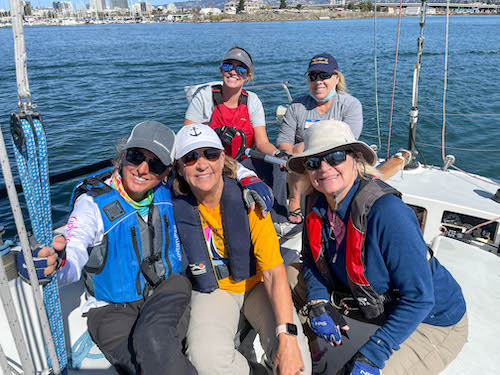
This year’s program provides six “educational tracks” to cater for the wide range of skills and experience among sailors. They’ve also renamed everything from the standard “Beginner,” “Level 1” etc., labels to the fun, themed titles Sea Sprite, Nautical Nymph, Maritime Muse, Wind Warrior, Sail Goddess, and Racing (OK, this one is not so different). From there they go back to basic names, but perhaps for good reason. How would you rephrase Racing, Advanced Elective Spinnaker, or Advanced Elective Docking and Anchoring?
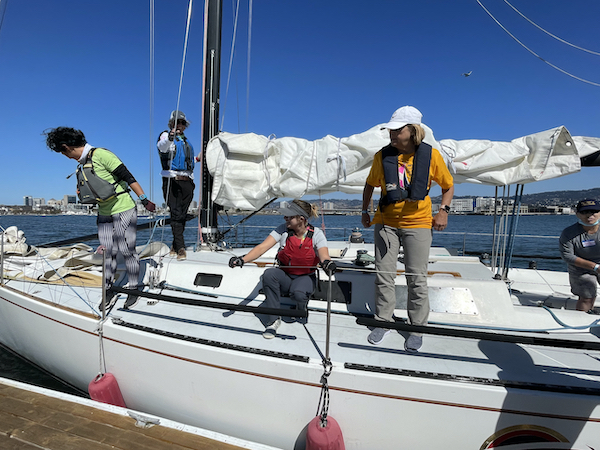
We particularly like the idea of the last course in the list, Advanced Elective — Suddenly Single. This one is a great opportunity to put yourself in the position of what happens if the captain is unable to take the boat home.
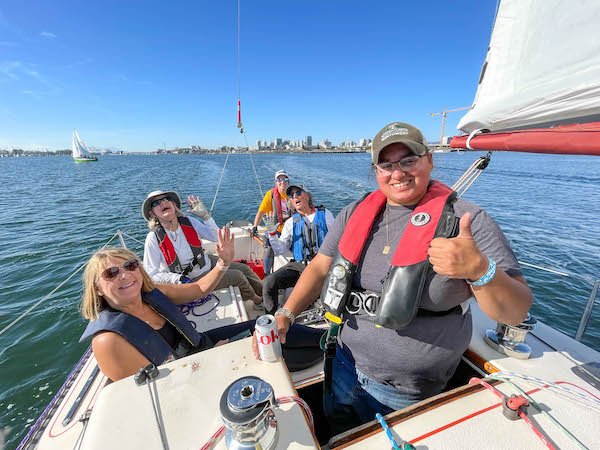
The course description reads, “A first mate is expected to get the boat and its entire crew home safely. If a crew member falls overboard, everyone on board has to work together to get that person back on board and treated for possible hypothermia. If that is not enough, that first mate then has to sail the boat home and get it docked. Anytime a woman accepts an offer to go sailing with just one other person, that woman is essentially the first mate. At least spend a day preparing for the potential that you may become a first mate.” It’s better to know before you go!
But here’s the really cool part. You can check the self-assessment sheet to determine which level you’re at and which course to sign up for.
You can also send the ladies an email and they’ll help you choose the best class for your level of experience and knowledge: [email protected].
Registration closes September 15.
“Tell a friend — and register now before it’s too late! We can’t wait to see you out on the water!”
Keep up to date with more sailing events in our online calendar.
Visit Annapolis in the Fall for the Sailboat Show
October might seem a ways away, but it’s never too early to start planning your trip to the Annapolis Sailboat Show. This year’s show is shaping up to be a doozy with over 200 sailboats and more than 550 exhibitors expected to file into downtown Annapolis on October 10-14. Tickets and show info.

